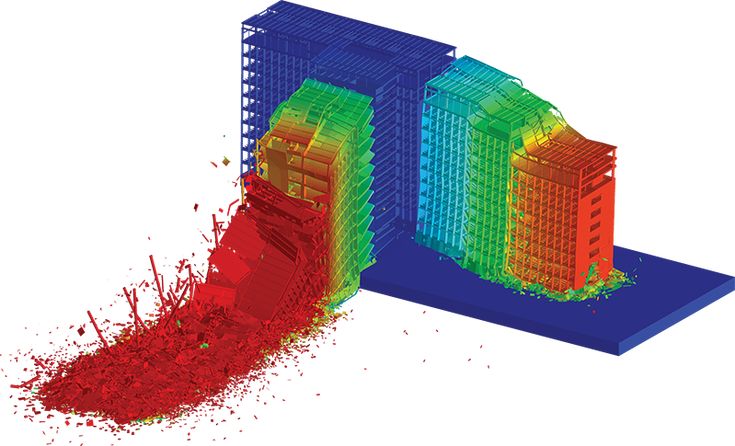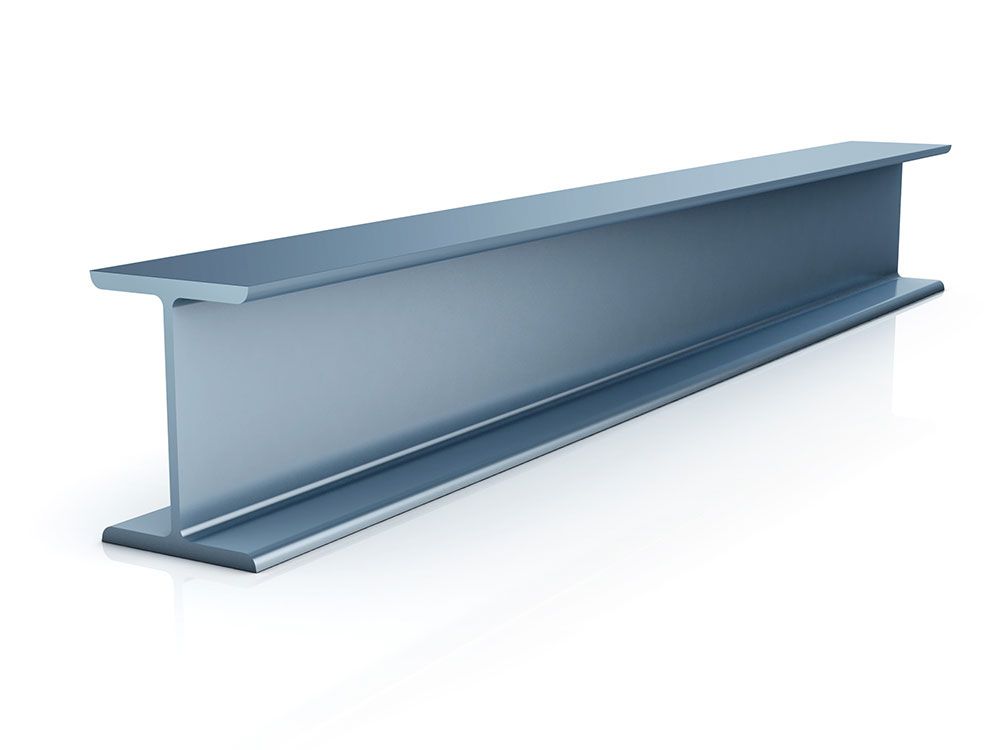Dynamic analysis plays a crucial role in understanding the behavior of structures subjected to dynamic loads such as earthquakes, wind, and vibrations. This analysis provides valuable insights into the structural response, ensuring the safety, efficiency, and reliability of various engineering systems. In this article, we will explore the concept of dynamic analysis, its significance, different types, steps involved, applications, challenges, and more.
Structures are constantly exposed to various dynamic forces, and it is vital to evaluate their response to such loads. Dynamic analysis is a branch of structural engineering that focuses on studying the behavior of structures under dynamic conditions. Unlike static analysis that considers the equilibrium of forces, dynamic analysis takes into account the time-dependent effects on structures.
What is Dynamic Analysis of Structures
Dynamic analysis of structures refers to the process of studying and evaluating the behavior of structures under dynamic loads such as earthquakes, wind, vibrations, and other external forces. It involves analyzing the response of a structure to time-varying loads and understanding how it behaves and reacts to these dynamic forces.
In structural dynamics, the focus is on the dynamic characteristics of a structure, including its natural frequencies, mode shapes, damping properties, and response to various types of dynamic loads. The analysis considers the interactions between the structure and the applied forces, and aims to determine the structural response in terms of displacements, velocities, accelerations, and internal forces.
Dynamic analysis is particularly important in the design and assessment of structures, as it helps engineers and designers ensure that a structure can withstand the dynamic forces it may encounter during its lifetime. It also aids in optimizing the design to minimize vibrations, oscillations, and potential failure modes.
Various methods are used for structural dynamics, such as modal analysis, response spectrum analysis, time history analysis, and finite element analysis. These methods involve mathematical modeling, numerical simulations, and computational techniques to predict the structural behavior and response under dynamic loading conditions.
Dynamic analysis is applied to a wide range of structures, including buildings, bridges, dams, offshore platforms, aerospace structures, and mechanical systems. By understanding the dynamic behavior of these structures, engineers can ensure their safety, stability, and performance under different dynamic loading scenarios.
Types of Dynamic Analysis
Modal Analysis
Modal analysis is a fundamental technique used to identify the natural frequencies and mode shapes of a structure. It involves solving the eigenvalue problem of the structural system to determine its dynamic characteristics. Modal analysis provides crucial information about the dominant modes of vibration and their corresponding frequencies, aiding in the subsequent steps of analysis.
Response Spectrum Analysis
Response spectrum analysis is widely employed for evaluating structures subjected to seismic loads. It uses a response spectrum, which represents the maximum response of a structure at different frequencies. By applying the response spectrum to the structure, engineers can assess its performance under earthquake-induced motions and design it to withstand the expected ground motions.
Time History Analysis
Time history analysis involves simulating the actual time-varying loads or ground motions that a structure may experience. It captures the dynamic response of the structure over time, considering the specific characteristics of the applied forces. Time history analysis is particularly useful when dealing with complex loading patterns or non-linear behavior of the structure.

Steps Involved in Dynamic Analysis
Dynamic analysis follows a systematic approach to evaluate the response of structures to dynamic loads. The key steps involved are:
- Structural Modeling
The first step in dynamic analysis is to create an accurate and realistic model of the structure. This includes defining the geometry, material properties, and boundary conditions. The structural model should capture the essential features of the real structure to ensure accurate results.
- Load Definition
Next, the dynamic loads acting on the structure need to be defined. These loads can vary depending on the type of analysis and the specific application. For example, in seismic analysis, the ground motion records or response spectra are used as input. In wind analysis, wind pressure distribution is considered. It is important to carefully determine and apply the appropriate loads to obtain reliable results.
- Selection of Analysis Method
Based on the nature of the problem and the desired level of accuracy, an appropriate analysis method is chosen. Modal analysis is commonly used for preliminary assessments and mode shape extraction. Response spectrum analysis is suitable for seismic design. Time history analysis is employed when detailed dynamic behavior is required. The selection of the analysis method depends on the specific objectives of the study.
- Calculation of Natural Frequencies and Mode Shapes
In modal analysis, the natural frequencies and corresponding mode shapes of the structure are calculated. These are the inherent characteristics of the structure that determine its dynamic behavior. The natural frequencies indicate the frequencies at which the structure tends to vibrate, while the mode shapes represent the patterns of deformation associated with each frequency.
- Evaluation of Dynamic Response
Once the natural frequencies and mode shapes are known, the dynamic response of the structure to the applied loads can be evaluated. This involves determining the displacements, accelerations, and internal forces at various locations of the structure. The response analysis helps assess the structural performance, identify critical areas, and ensure that the design meets the desired criteria.
Applications of Dynamic Analysis
Structural dynamic finds wide applications in various fields of engineering. Some notable applications include:
- Seismic Design of Buildings
Dynamic analysis plays a crucial role in seismic design, helping engineers evaluate the response of structures to earthquakes. By considering the dynamic characteristics of the soil-structure system and the expected seismic forces, engineers can design buildings that can withstand the ground motions and minimize damage during seismic events.
- Bridge Design and Evaluation
Bridges are subjected to dynamic forces such as traffic loads, wind, and earthquakes. Dynamic analysis aids in designing efficient and safe bridge structures by considering the dynamic behavior, natural frequencies, and mode shapes. It ensures that bridges can withstand the dynamic loads and maintain their stability and serviceability.
- Vibrations in Mechanical Systems
Dynamic analysis is essential in understanding and mitigating vibrations in mechanical systems. It helps analyze the dynamic response of rotating machinery, vehicles, aerospace structures, and other mechanical systems. By identifying potential resonance conditions and optimizing the design, engineers can minimize vibrations, noise, and fatigue failures.
Dynamic analysis of structures is a vital tool in engineering design, providing insights into the behavior of structures subjected to dynamic loads. By understanding how structures respond to earthquakes, wind, vibrations, and other dynamic forces, engineers can optimize designs, ensure safety, and improve performance.
Despite challenges in capturing complex behavior and addressing computational requirements, dynamic analysis remains indispensable for various applications, including seismic design, bridge evaluation, and vibration control in mechanical systems. It allows engineers to make informed decisions and create structures that can withstand dynamic forces while ensuring safety and reliability.
FAQs
What software is commonly used for dynamic analysis of structures?
Popular software tools for dynamic analysis include SAP2000, ETABS, ANSYS, and ABAQUS.
How does dynamic analysis help in designing earthquake-resistant buildings?
It helps engineers understand the response of buildings to seismic forces, allowing them to design structures that can withstand earthquakes and minimize damage.
Can dynamic analysis predict structural failures?
Dynamic analysis provides valuable insights into the structural response, but predicting failures with absolute certainty is challenging. It helps identify potential failure modes and enables engineers to mitigate risks through appropriate design measures.
Is dynamic analysis only applicable to large structures?
No, it is applicable to structures of all sizes. While larger structures may exhibit more complex behavior, analysis is relevant for any structure subjected to dynamic loads.
Are there any limitations to dynamic analysis?
Analysis relies on various assumptions and input parameters, and uncertainties in these can impact the accuracy of the results. Additionally, the computational requirements for detailed dynamic analysis can be demanding, necessitating efficient resources and modeling techniques.


